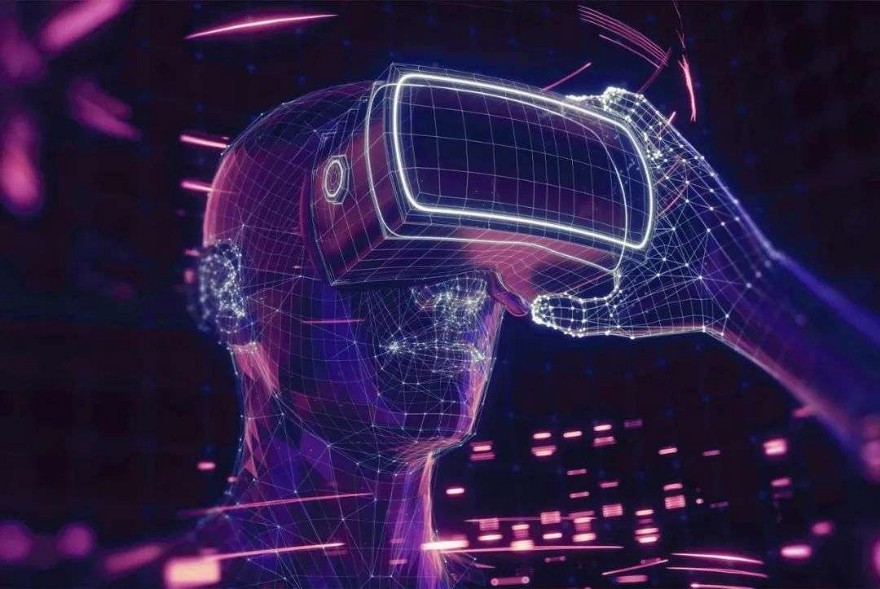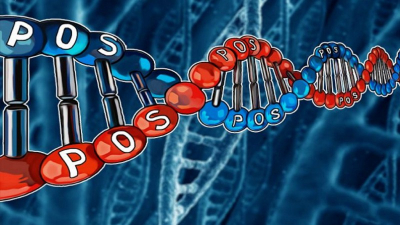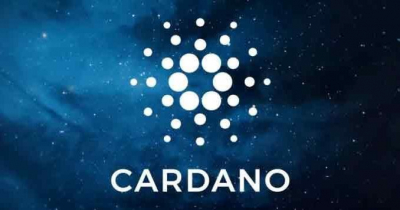What is Web3
If we are going to talk about the third iteration of the site, it is good to explain what the previous two were like. The first iteration of the web was read-only. This means that authors published articles on the server and users could only read them. They didn’t need to log in and no one verified their identity. All information was freely available. Those who wanted to publish articles had to have access to the server where they could save the article. Open-source protocols were used for Web1. The basic protocols were TCP/IP and the most used HTTP. It can be said that the Internet was free.
Web2 was born during the dot-com bubble in the new millennium and is characterized by the fact that users can create and share information. This is the Internet as we know it today. It could be described as read-write. Users were given the ability to create and publish their own content. It didn’t have to be just articles, but also emotions, comments on Facebook, or short messages on Twitter.
Web2 ceased to be free because the Big Five pay the bills for running servers and took control of the content and the users. Many services today require users to log in. Digital identity is important, so it’s not surprising that companies like Google, Facebook, and Twitter have taken control. These companies act as identity providers. This means, that digital identities are owned by centralized authorities that have monopolized trust systems. Today, if you want to log in to a service, you can do so through your accounts with the giants named above. Users have traded convenience for precious information, which they hand over to the IT giants who profit from it, completely free of charge. Web2 users are products.
Web3 extends the possibilities of the Internet with the ability to own. As a content creator, I have no control over the platform where my content is published. I don’t own the text and the platform decides who gets to read it. If the platform decides not to publish the text, I’m out of luck. If the platform decides to delete my account, it can do so at any time. I will immediately lose access to my readers. The goal of Web3 is to enable people to own their content, identity, identity-related data, money, and other valuables. People will decide what they want to share and who to send it to. In addition, Web3 comes with the idea of partially owning the platform itself. If the Web2 platform makes money from advertising, it can keep everything to itself. In the case of shared ownership, it is possible that the profit is split fairly between authors, readers, and the platform. Web3 can be described as read-write-own.
Web3 principles are similar to blockchain properties
If you think about it more, you will find that Web3 basically copies the key features of the blockchain. Let’s demonstrate this on the Cardano network. Anyone in the world can download a Cardano wallet and start using the network to interact financially or socially with their peers. Cardano is a global network and is available everywhere. There is no need to ask anyone for permission. Once a user sends a transaction, she is almost 100% sure that no one will censor it. No one can confiscate ADA coins somewhere in the middle of the process. Key features are achieved through network decentralization and financial incentives. We can say that with ADA coins we have created a platform that is owned by the community and not by a central authority. This will be true as long as the coins are well distributed among users.
Any blockchain network can be viewed as a collection of rules that are written in the source code. In the Cardano network, for example, it is thus tightly defined what exactly to do with the fees collected and how they are distributed between the platform and the stakeholders. Decentralized services, such as DEX, can also be viewed as an organization that can be owned through tokens. Tokens can enable voting and possibly changing the rules or settings of the service. The ability to modify the rules and evolve is quite crucial for the further development of the service. Centralization is advantageous in that rules can be changed or development directed instantly. Unfortunately, centralization is also a weak point in terms of abuse of power.
Cryptocurrencies are popular for many reasons. One of them is the key fact that they are not controlled by central authorities. This makes it possible to ensure the immutability of the rules, which were set up fairly for everyone at the outset. If the rules were to change, it would be a collective decision of the majority. As a matter of principle, only those decisions that are favorable to the majority will be enforced. Control over the rules makes the crucial difference between a centralized and a decentralized system. At the same time, it is a key feature in terms of the possibility of owning or sharing ownership. In the ideal world of Web3, no one can take value away from you or prevent you from creating it.
It can be said that Web3 is an effort to achieve a greater degree of decentralization on the Internet. People could enjoy a higher level of freedom on Web1 but the Internet did not offer users many useful services. Web2 greatly expanded the useful services, but at the cost of centralization followed by misusing of power. Freedom also decreased and it can be said that the power of IT giants constantly grows. Web3 seeks to weaken the power of the big IT giants and put the power back in the hands of the users. This is essentially the same principle that Bitcoin is trying to achieve at the level of money. A certain portion of Bitcoin fans believes that Bitcoin can weaken the position of central banks and replace fiat money. Bitcoin and Web3 have essentially the exact same goal. They seek to give people more control over their destiny and give them the ability to avoid third parties that exercise their strong position.
Web3 helps realize the original vision of cryptocurrencies. If people strive for independence, want to trust technology more, and prefer collective decision-making over central planning, the path to this goal is through decentralization. Cryptocurrency fans seek to redefine the social contract, which is nothing more than changing the rules by which society is governed. Winning over central banks is as big a challenge as trying to beat the IT giants. Both are important to the path to freedom.
If people understand the meaning of decentralization and its benefits, they will want to promote its principles wherever possible and technologically feasible. One could even say that it makes no sense to pursue free money and leave banks, social networks, and everything else in the hands of CEOs. If the concept of decentralization takes hold, it will bring about fundamental societal changes, and we cannot predict what society will look like and what its preferences will be at the moment. Web3 is nothing more than using blockchain technology and solving centralization problems from a different side than originally intended at the birth of cryptocurrencies.
Why it is important to own the infrastructure
There is a direct link between your ownership and the decentralized network. You can exclusively own ADA or BTC through a private key and no one in the world can take it away from you. However, this is only true as long as Cardano and the Bitcoin network exist and maintain a high degree of decentralization. Should the decentralized network cease to exist, the coins will immediately lose value as well. If someone dominates the network consensus, the network will cease to be decentralized and thus there is no guarantee that the rules will be followed.
People need to learn that if they want to gain control of their assets, it’s not just about protecting their own private keys. It is also in the interest of cryptocurrency owners to maintain a high level of decentralization of the network. Blockchain is a digital technology built on principles of power distribution. This power must be truly distributed among as many users as possible. It must be easy and affordable to participate in decentralization.
In the Cardano ecosystem, it is very easy to participate in decentralization because each ADA coin owner essentially holds a portion of the decision-making power. Thus, each ADA coin holder essentially owns a small or larger portion of the infrastructure that protects his or her own assets. If Cardano prospers economically, all ADA coin holders can be rewarded with the protocol. There is a direct economic incentive to participate in decentralization and decide the future direction of the platform.
Web3 will have more layers
Complex services are often dependent on multiple protocols and layers. Web3 services will have more layers as well. Each layer will have different properties and can provide a given functional part of the overall functionality. The first layer is crucial for creating and preserving value, so a high level of decentralization and security is important. The Cardano network will oversee the correct number of ADA coins as well as all issued tokens including NFTs. Moreover, the Cardano network will be used as a decentralized public-key infrastructure (DPKI) to create a decentralized digital identity (DID). Cardano can protect users’ private data. The first layer is also where smart contracts are deployed. Smart contracts can be seen as a key on-chain programmable layer for the functionality of Web3 services.
Cardano layer is coordinated by ADA coins and an incentive model. The level of decentralization should be the highest. Services can issue their own tokens for a similar purpose. These tokens will be protected by the first tamper-proof layer, but it can be expected that there will always be fewer token holders than ADA coin holders. The degree of decentralization may be lower.
In general, the first layers of Web3 will enable programmability related to trusted creation of value, ensuring ownership, and transfer of value. All other layers will place more emphasis on a pleasant user interface, which means they can be less decentralized. The higher layers will use the coins, tokens, and infrastructure of the lower layers. The faster technology advances, the more decentralized the higher layers can become.
It is important to realize that users will be the ones who decide to what extent decentralization and security are important to them. At the moment, no one has the answer. All we know now is that people are not very willing to install full nodes on their computers. In the case of phones, it’s not even possible. In addition, users are not willing to compromise on their demands for user comfort, and it is questionable how much they will be willing to pay for services. The approach of users can be individual but we already know how the majority behave. People are willing to buy cryptocurrencies and don’t mind holding them through centralized third parties like Revolut or Coinbase. They use PayPal for payments.
This is not very encouraging news for decentralization. Essentially, all second layers will compete with centralized services and therefore need to be on a par in terms of ease of use. This will be difficult to achieve if a high level of decentralization is to be maintained. The population is not at all ready for the concept of decentralization and it may take another decade before it is a preferred feature for them.
The authors of specific services will have to decide which parts of their applications must be decentralized and which must not. For example, for games, the most important feature is good gameplay. So the game itself does not need to be stored on the blockchain. However, if it will be possible to earn stable coins or ADA coins in the game, the only thing that matters is that the winners are always actually rewarded and the team or anyone else cannot deprive them of their winnings from a central authority position. It’s easy to imagine card game players locking in their bets before the game starts and the smart contract deciding who to send the winnings to when it’s over. The user interface needs have nothing to do with decentralization or blockchain, as long as it is ensured that no player has any advantage arising from poor game design. We expect that people will trust open-source projects more.
Blockchain has the potential to kick-start entirely new business models. One of the goals of the Cardano project is to enable peer-to-peer lending from people in rich countries towards people in developing countries. People are used to borrowing from friends or from a bank. In recent years, it has become clear that people are willing to lend to each other and Peer-to-Peer lending is on the rise. Identity verification is quite crucial in this business. Unfortunately, people from developing countries often do not have verified identities. This makes it difficult for them to take out a loan. Providing people with a digital identity and enabling them to take out a loan is a goal for Cardano. The Peer-to-Peer lending service will be composed of multiple layers. Services like authentication, stable coins, matching supply and demand, exchanging digital tokens for local currency, transferring value, evaluating the contract between participants, etc. will exist on different layers with different levels of decentralization.
Note that even if participant authentication was completely centralized or requires cooperation with local authorities, the remaining layers can be decentralized. The existence of stable coins, the contract between users, and the transfer of value can be decentralized.
Wait, doesn’t peer-to-peer lending fall more into the realm of DeFi? You’re right, it does. Web3 seeks to give control back to users and allow them to own basically anything that may have value. DeFi is really just a subset of Web3 that focuses on financial services.
Ownership and decentralization
We have said that the ability to exclusively own or share ownership is a key differentiating feature between Web2 and Web3. Related to this is the ability to create value. What is actually the difference between native blockchain protocol coins such as ADA and other tokens? The only difference is that the Cardano protocol doesn’t allow the existence of more than 45,000,000,000 ADA coins and manages the gradual release of coins into circulation. ADA is used to distribute power in the Cardano ecosystem. Tokens and NFTs can be issued by anyone according to their own rules.
As far as to coin transfer and use in Plutus scripts, the Cardano protocol treats ADA coins exactly the same as tokens. That is, coins and tokens are globally available, no one can censor transactions, as long as users have their own private keys, they have full control over their wealth. This basically means that people can rely on the particular features of the network that come from decentralization and use that to their own advantage.
Does an unchanging monetary policy only make sense for Bitcoin, or is it also important elsewhere? From our perspective, this feature or service is useful in many other places. Cardano has a large user base that is eager to build more advanced decentralized services. For that, they need their own decentralized platform and their own rules. BTC coins cannot be used to implement such a platform in principle. Cardano, therefore, has its own ADA coins, making the network completely independent of Bitcoin’s fate. The same can be said for individual services built on the Cardano platform. Services will be created that have a limited number of users. It makes no sense for a service to be dependent on ADA coins. It’s a smart idea to issue your own tokens for a given project.
What if a country wants to issue its own currency and define its own monetary policy, say, with, say, 4% inflation per year? If the monetary policy is to be immutable, some global network over which no one has control must ensure exactly this. It doesn’t matter what other layers the new coins will be transferred on. What matters is that the rules are followed and unchangeable. Coins can be issued on the Cardano layer, and that includes the rule that 4% of new coins are created each year. What if the state needs to borrow more money in the case of crisis? A rule can be prepared for this eventuality as well. Cardano can lend to the state with the understanding that if the state does not repay on time, the protocol will reduce the annual inflation of new coins adequately.
Notice how elegantly it works. Cardano allows you to define rules that cannot be changed once they are in place. It takes advantage of a decentralized first layer over which no third party has control. Not even the states. Coins or tokens can be used on other layers so they do not burden the Cardano network. The Cardano network will only ensure that the number of coins or tokens does not increase. People can own the coins of a given state, they will be able to verify authenticity easily, but the state will have no control over monetary policy. Users will be able to use the Cardano network to transfer coins at any time, so possible censorship on the second layer makes no sense.
States are unlikely to want to give up control over money, so this example was kind of hypothetical. However, if a group of people in a given location wanted to issue its money, the possibility exists.
The NFT industry uses blockchain to ensure that a given work represents a given token. Ideally, it ensures that the work is indeed from the claimed author and that neither the author nor anyone else subsequently republishes the work. If this happens, it will be very easy to detect. If the author has a digital ID and releases the NFT on the Cardano network, users will be able to verify the origin of the work and the authenticity of the NFT. The artwork, whether a physical image or a representation of a physical object, will be owned by the owner of the NFT, no one else. People will be able to easily distinguish the original from fakes.
Even if anyone in the world makes a copy of the image or even their own NFT, the original NFT will always be traceable and only that will be of the highest value.
People mainly associate NFTs with images, but a token can represent pretty much anything. It doesn’t matter if it’s a digital game, a song, an album, a video, a tweet, access to content, a ticket, or a vote. The important thing is that it has some value to that group of people. It doesn’t have to be economic value and liquidity does not need to be high.
People sometimes mistakenly think that if a token doesn’t grow in market value, it has no value. That is a big mistake. For example, stable coins have stable purchasing power by design. If you want to really own money, not rely on a bank account, and at the same time want to avoid the risk of volatility, you have no choice but to start using stable coins. You will get all the benefits of decentralization and no one will take your money away from you.
Why do the IT giants have so much control over Web2 these days? One of the reasons is that they have a monopoly on the provision of digital identity. This gives them full control over user data and allows them to profit from it. The IT giants know more about you than, say, governments and authorities. They may know more about your habits than you do.
Digital identity is also something that people can take back under their own control. Anyone can stop using the services of the IT giants, including their service of providing IDs to third parties. The reality is that if there is no alternative, no one will do it. The only viable alternative must be built on decentralized technologies. Cardano provides a decentralized public key infrastructure (DPKI) where records can be instantly authenticated by anyone, anywhere. Moreover, it provides data sharing through secure, private, peer-to-peer communication channels.
People don’t realize how important their identity is in everyday life and how crucial the information associated with it is. Many services and social interactions are built on the basis of the verifiability of the identity of the other party. For the blockchain industry and Web3, the verifiable identity of users is just as important as it is for Web2. The fundamental difference lies, again, in ownership.
When will we see Web3 services?
Web3 is definitely a relevant effort, but it is hard to predict when we will see wider adoption. The blockchain industry is still in its infancy. We needed more than 10 years from the launch of the first blockchain network to have a more scalable and sustainable PoS consensus. We have other alternatives and that’s a good thing. While technological progress is accelerating, we estimate that the first globally successful Web3 services will emerge in 5–10 years.
Decentralized services need to offer concrete benefits to people. Decentralization is a very powerful concept, but from a marketing perspective, it will never be the reason why people will want to join Web3. Current services have a large user base and a strong network effect. People first need to learn how to use cryptocurrency wallets, which are the gateway to Web3. Fortunately, this is happening. People are installing wallets from different networks and trying to send tokens. However, this is not enough for mass success. Services need to emerge that actually compete with Web2 services. Until decentralized lending is as reliable and visibly cheaper than from a bank, people will remain loyal to the traditional world.
Perhaps all of today’s large companies are watching the blockchain industry and beginning to understand the benefits. This is most evident in the NFT industry. Big companies have not been very interested in using cryptocurrencies as money, so their interest in NFTs is very surprising. Samsung, Twitter, Microsoft, Facebook, Ubisoft, and many others are looking for ways to leverage NFT. This is not just the hype of some alternative cryptocurrency speculator community. NFT is becoming a serious industry. These big companies will need to integrate their infrastructure with blockchain networks. Efforts by large companies to create their own blockchain will always fail on decentralization. If artists release their NFTs on Cardano and other public networks, IT firms will have no choice but to adapt and settle for the fact that they will never fully own the infrastructure of public networks.
It can be expected that not only IT giants and many startups will start building some services on blockchain networks. However, blockchain networks are often still not ready for the mainstream. The IOG team will need a few more years before Cardano is more scalable. The current enthusiasm may wane and it is possible that the big boom will not happen until 5–10 years from now. However, it is positive to see interest in blockchain networks from both businesses and everyday people.
Conclusion
Cardano is definitely a good platform to build Web3 services on, as it is one of the most decentralized networks currently. Web3 is essentially all about features that are born out of the principles of decentralization. Cardano has a strong community and there was a fair distribution of ADA coins at the beginning. It’s a community-owned project. These advantages will become increasingly important.
The technological readiness of blockchain networks will be key for Web3 services. IOG is one of the largest teams in the cryptocurrency space. This makes Cardano the most developed project according to GitHub. Technology needs to evolve and decentralized networks are no exception. Cardano is being built to give people back control of their lives. That’s the original vision, and it makes sense to strive to fulfill it. The team will work on Cardano and get it ready for Web3 in a few years.
Source: Web3 on Cardano

 Decentralization is at the heart of Cardano
Decentralization is at the heart of Cardano Cardano Staking
Cardano Staking What does it mean for Cardano to be a platform?
What does it mean for Cardano to be a platform? Your very first article about Cardano
Your very first article about Cardano